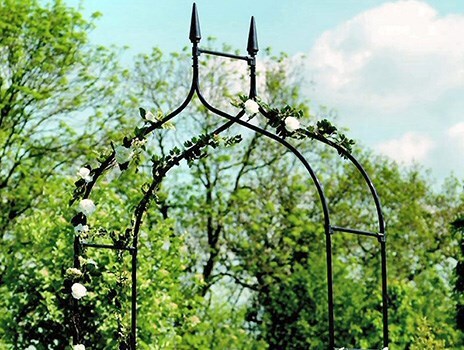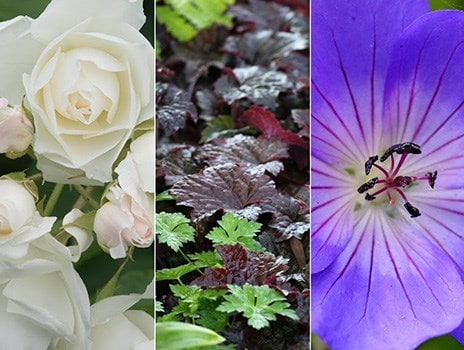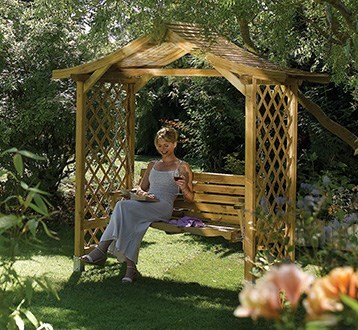Transform your garden
A strategically positioned arch or pergola can transform the appearance of a garden, whether you are creating an entrance, framing a view or simply adding height to one-dimensional plot. Arches and pergolas also offer great opportunities for showing off a range of climbers to best effect.
Creative uses around the garden
- Framing a view or focal point
- Making a fragrant seat
- Creating an entrance
- Dividing garden into rooms
- Adding height and interest
- Creating a shady refuge
- Providing privacy
Watch Alan as he plants and trains tropical climbing plants to grow around and with your pergola.
Arches and pergolas also offer great opportunities for showing off a range of climbers to best effect.
Design essentials
It is important to match the scale and design of any new garden structure to the existing layout and style. Arches are most useful where space is at a premium, but pergolas can accommodate much larger climbers, with space underneath for alfresco dining.
Awe-inspiring arches

Compact arches are the most versatile and can be used in many ways - creating quite different effects. The most obvious and perhaps the most endearing, is to use an arch to frame an entrance or garden gate - a welcoming floral portal that stimulates the senses and draws the visitor in. However, an arch also can be an effective way of dividing one part of a garden from another creating a much more intimate setting, or for separating off and helping to hide utilitarian areas, such as the compost heap or vegetable patch. It is surprising how powerful an arch can be.
For example, if you have a path between two borders leading down the garden and place an arch over the path, your eye will be drawn to this point and the garden will seem divided even though nothing else has changed. For a completely different effect, try positioning several arches in sequence down a path to create a covered walkway that will add a sense of mystery and intrigue to the overall design. A simple arch can act like a magnifying-glass, too. You can use this to your own advantage and focus attention on particular features or specimen plants.
An arch is excellent for highlighting a decorative statue or urn part-way down the garden, or for making a feature out of an isolated seating area – creating a cosy arbour of fragrant climbers. On the other hand, if you position an arch to frame an attractive feature outside the garden, such as nearby church steeple, you will not only increase the impact of the vista, but you’ll create the illusion of space within the garden itself. Another design trick to try in a small garden is to position an arch at an angle near a boundary with a path leading up to and disappearing beyond the arch so that it appears to be leading to another part of the garden – in that way making the small garden seem larger than it really is.
Pristine pergolas

A pergola is a much more imposing structure and need to be positioned with care, especially in a small garden. For example, if a pergola next to a house covers a large part of the patio it can appear overbearing and will limit the space available to sit in the sun.
On the other hand, pergolas are substantial enough to accommodate all but the most vigorous climbers with space underneath for a small patio - ideal for alfresco meals. A pergola can be used to create a shady refuge in a sunbaked plot or turned into a fragrant oasis if decked out with scented climbers.
In an overlooked garden, a pergola can provide essential privacy – forming a completely unobtrusive garden hideaway. Pergolas are also a good way of breaking up the stark appearance of large areas of paving without limiting its usefulness.









